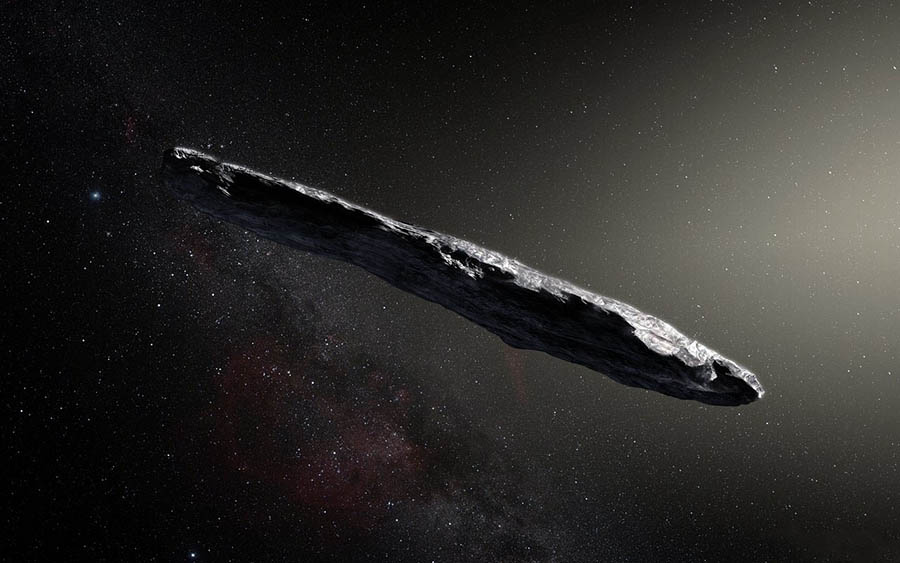In October 2017, astronomers made a spectacular discovery – they spotted the first ever object to visit our solar system from outer space. They gave it a suitably exotic name… ‘Oumuamua. Its discovery set off a hurricane of press speculation and a major scientific investigation.
To investigate this spectacular astronomical detective story, The Sky at Night goes to Queen’s University in Belfast, which has become the centre of scientific research on this cosmic visitor. When they first spotted it, all scientists knew was that it was small, it was travelling fast, and it came from outside our solar system.
Its discovery provoked a host of questions. What did it look like? How had it formed? What was it made of? Where had it come from? To answer these questions, the team pieces together all the clues that scientists have extracted from the small amounts of data collected as ‘Oumuamua flashed through the solar system.
This forensic analysis – including exclusive new revelations – means we can now piece together the most comprehensive picture yet of this extraordinary object.
Oumuamua
Oumuamua is the first known interstellar object to pass through the Solar System. Formally designated 1I/2017 U1, it was discovered by Robert Weryk using the Pan-STARRS telescope at Haleakala Observatory, Hawaii, on 19 October 2017, 40 days after it passed its closest point to the Sun. When first seen, it was about 33,000,000 km (21,000,000 mi; 0.22 AU) from Earth (about 85 times as far away as the Moon), and already heading away from the Sun. Initially assumed to be a comet, it was reclassified as an asteroid a week later, and finally (6 November 2017) as the first of the new class of interstellar object.
Oumuamua is a small object, estimated to be about 230 by 35 meters (800 ft × 100 ft) in size. It has a dark red color, similar to objects in the outer Solar System. Oumuamua showed no signs of a comet tail despite its close approach to the Sun, and has significant elongation and rotation rate, so it is thought to be a metal-rich rock with a relatively high density. Oumuamua is tumbling rather than smoothly rotating, and it is moving so fast relative to the Sun that there is no chance it originated in the Solar System. It also means that Oumuamua cannot be captured into a solar orbit, so it will eventually leave the Solar System and resume traveling in interstellar space. Oumuamua’s system of origin and the amount of time it has spent traveling amongst the stars are unknown.




